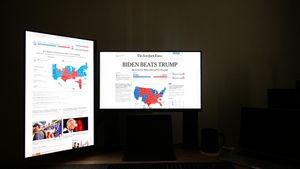Across the United States, gun violence remains one of the most pressing issues for law enforcement and communities alike. Recent investigations and reports indicate both fatal and non-fatal shootings continue to create rippling impacts on families and neighborhoods, highlighting the urgent need for effective action and policy change. With each incident, law enforcement strives to piece together the circumstances surrounding the events, and the latest statistics reflect concerning trends.
According to the Gun Violence Archive, as of early 2023, there have been thousands of shooting incidents nationwide, with categories ranging from homicides to unintentional discharges. This extensive database sheds light on how gun violence is not just limited to high-profile mass shootings but is often rooted deeply within local conflicts and misunderstandings.
For the families devastated by these tragedies, the aftermath of gun violence frequently brings not only grief but also the challenging process of dealing with law enforcement investigations. Investigators work quickly to gather evidence, interview witnesses, and create timelines to establish what happened. They often face immense pressure from communities seeking answers and justice.
On the ground, communities have begun to respond to these incidents with various local initiatives aimed at reducing violence. For example, many cities have implemented community policing strategies, where officers engage more with residents and local organizations to build trust and prevent crime before it happens. These proactive measures attempt to tackle the roots of violence, fostering healthier environments.
Despite various initiatives, the statistical reality of gun violence can paint a stark picture. The Centers for Disease Control and Prevention (CDC) data reveal a growing list of fatalities involving firearms, prompting renewed discussions surrounding gun control policies. Advocates argue for more stringent regulations, especially concerning the sale and distribution of firearms, emphasizing the need to balance Second Amendment rights with public safety concerns.
Recent reports suggest another layer to this complex issue. Mental health interventions are becoming increasingly emphasized as key components of reducing gun violence. Proper mental health support systems and crisis intervention programs can provide individuals struggling with their mental health issues the assistance they need, potentially preventing violence before it occurs.
Families affected by gun violence often face long-term psychological repercussions. Studies indicate they may suffer from post-traumatic stress disorder (PTSD), anxiety, and depression as they attempt to navigate the fallout from traumatic events. Many organizations offer counseling and support services to help these individuals, recognizing the need for comprehensive approaches to healing.
At the judicial level, courts are also facing increasing workloads related to gun violence cases. Prosecutors often must navigate complicated legal landscapes, determining whether charges are appropriate or if cases require diversion programs focused on rehabilitation rather than punitive measures. This focus on treatment over punishment reflects broader societal questions about the effectiveness of current criminal justice approaches.
Local media coverage remains pivotal during investigations of fatal and non-fatal shootings as it pulls back the curtain on the statistics and humanizes the victims. The stories shared by survivors and families can ignite public discourse, prompting citizens and lawmakers to advocate for change.
Community activists are also playing significant roles. Their grassroots efforts often focus on violence prevention strategies, providing educational resources and creating safe spaces for youth. Efforts might include tutoring programs, job training, and mentorship initiatives. By equipping young people with the skills and support they need, communities hope to break cycles of violence.
Nationally, initiatives like the National Institute of Justice have been working to implement evidence-based strategies to address and reduce gun violence. These programs aim to assess current methods and outcomes to align laws and regulations more closely with data-driven evidence.
It's increasingly clear the path toward resolving the gun violence epidemic is complex, requiring coordination between law enforcement, community organizations, mental health professionals, and lawmakers. Continued above-the-fold dialogue surrounding these issues fosters public awareness, leading to potential policy changes and improved community relations.
For police officers on the frontline, the impact of fatal and non-fatal shootings extends beyond the immediate investigation. These events can have lasting effects on officers' well-being, often leading them to experience moral injury or burnout. Agencies are beginning to recognize the necessity of offering mental health resources for their personnel, encouraging open discussions about the emotional toll of their work.
While these investigations continue, the public remains involved and vigilant. Community forums and meetings provide platforms for discussion, where citizens voice their concerns and suggestions. This level of grassroots engagement proves invaluable, as it fosters collaboration between residents and those tasked with their safety.
Looking toward the future, stakeholders across the board understand the need for cohesive strategies to reduce gun violence rates. Perhaps the most significant realization is the recognition of the multifaceted nature of gun violence, requiring comprehensive approaches instead of isolated solutions. Indeed, the conversations around gun violence are far from resolved.
Indeed, gun violence remains one of the most polarizing subjects within American discourse, with passionate advocates on both sides of the fence. Compounded by social, economic, and political elements, gun violence promotes continuing discussions on the balance between individual rights and community safety.
Community leadership and active citizen engagement will play ever-critical roles moving forward. By working collaboratively, communities, law enforcement, and policymakers can strive for solutions grounded in evidence, compassion, and the relentless pursuit of progress. Only through sustained efforts can they hope to make meaningful headway against the specter of gun violence wreaking havoc across the nation.



